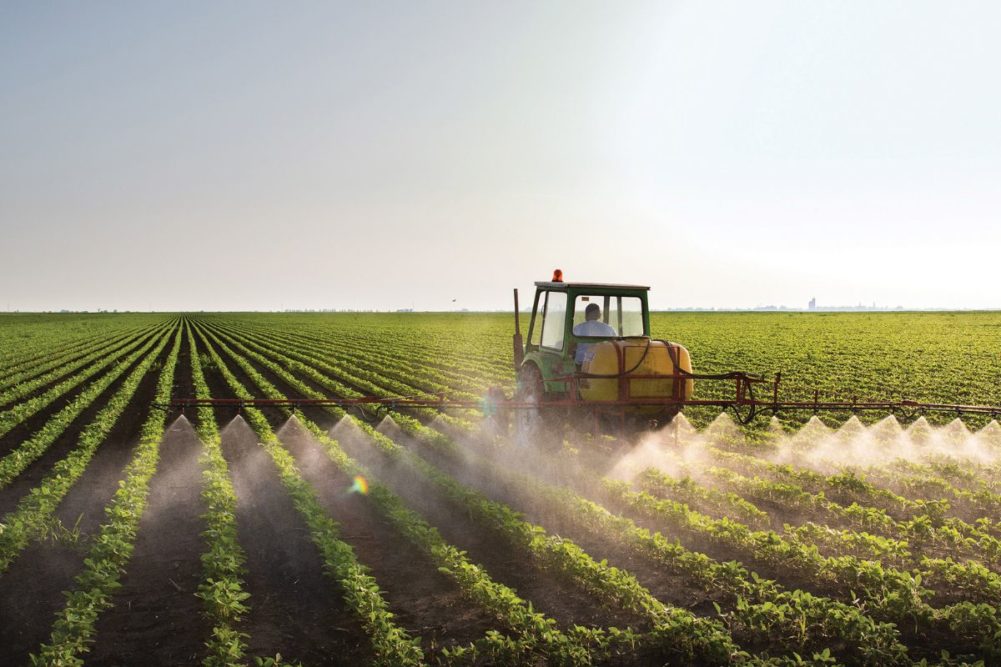According to Eurostat data, the EU scaled up Russian fertilizer imports in July to their highest point in 20 months, pushing Russia’s share in European purchases above 30% for the first time since the onset of the Ukrainian war.
Russia’s fertilizer exports to the EU rose 120% compared to June and 70% to July 2023, reaching €199 million.
Poland became Europe’s largest sales market for Russian fertilizers, doubling its purchases to €55.7 million. France saw a fivefold rise in imports to €31.5 million, and Germany expanded imports by a third to €24.5 million.
In July, Russia was the leading fertilizer supplier to Europe with a 31% stake, followed by Morocco with €111 million and Egypt with €85 million.
The recent surge in sales triggered a crisis in the European fertilizers industry in which profitability is teething to an edge. However, a few years ago, quite a few market players harboured ambitious expansion plans.
Fertilizers Europe, a Brussels-based lobby group, is confident.
“Benefiting from meagre, state-regulated gas prices, Russian fertilizer producers have adopted an aggressive price-undercutting strategy resulting in pushing domestic fertilizer producers out of business,” said Łukasz Pasterski, a spokesperson for Fertilizers Europe. “Around 20% of the EU’s production capacity is temporarily offline. The longer the situation lasts, the greater the risk of temporary closures becoming permanent.”
Fertilizers Europe is calling on the EU and member state officials to take measures to reverse this growing negative trend.
Europe is no stranger to sanctions against fertilizer imports. Belarus, a large potash producer, has been banned from selling its fertilizers to the EU. As a result, over the past several years, Belarussian fertilizers in Europe have largely been replaced by deliveries from Canada and Israel, said Doriana Milenkova, analyst for Farm Inputs and Sugar with Rabobank’s RaboResearch.
“Russia, on the other hand, is not banned from exporting fertilizers, as EU sanctions explicitly exclude food supplies and fertilizers,” Milenkova added.
The recent hike in deliveries is primarily attributed to a recovery trend.
Trade data indicates that the share of Russian products in the EU market is 25% for 2024, significantly lower than the period from 2014 to 2021,” Milenkova said. “However, Russian exports have shown a recovery in traded volumes after a dip in 2022.”
The Rabobank analysts explained that this rebound is driven by Russia’s competitive production costs. Russian producers have access to cheaper feedstocks like natural gas and phosphate rock, which is no longer the case for EU producers.
Milenkova said that in this context, the European fertilizer industry is threatened not only by cheaper Russian fertilizers but also by products from other resource-rich regions like North Africa, the Middle East, and the United States.
The EU used to be heavily dependent on natural gas imports from Russia, which the Russian authorities occasionally used as political leverage.
European fertilizer manufacturers warn that now Russia wants to play the same trick with fertilizers.
“The EU is in the process of successfully decoupling its economy from Russian gas as a matter of European security and strategic autonomy,” Pasterski said. “Although most of Europe managed to find new sources of gas to replace Russian supplies, Europe is now deepening its dependency on Russian nitrogen fertilizers, which are gas in the solid form. Europe must take all necessary measures to avoid replacing one dependency with another, especially when it comes to a strategic sector such as fertilizer and food.”
Moreover, the existing pricing policy of the Russian fertilizer exporters suggests that centralized efforts are being made to increase the presence of Russian goods in Europe and kick European competitors out of the game.
“Currently, Russian producers place fertilizers minimally below the EU fertilizer market price in order to undercut EU producers while maximizing their own profit,” Pasterski said.
European businesses now fear that the Russian side’s endgame is to push its share of the European market to a critical level, after which possible export restrictions on fertilizer exports would appear to be particularly painful for European agriculture.
Some recent Russian actions fuel these fears. During a government meeting in September, Russian President Vladimir Putin tasked several ministries with considering imposing restrictions on the export of some critical commodities to “unfriendly countries.” Putin mentioned uranium and titanium as examples of what could be banned but indicated that the counter-sanctions list could be broader than that.
However, the Russian strategy of keeping prices just below the level of European manufacturers also means that possible restrictions would be manageable for European farmers. As long as the price gap between Russian and European fertilizers is not huge, the production costs along the supply chain will experience only a moderate impact, and European food inflation should not also accelerate.
“As a precautionary measure, the EU could introduce a phase-out period between the announcement of measures and their enforcement,” Pasterski said. “This would allow time for any market adjustments, including the resuming of full domestic production. The EU market would also remain open for imports from other exporters.”
Rabobank analysts, however, said the risks of Russian dominance in the European fertilizers market are not very high.
“EU has various alternative sources for fertilizers supply,” Milenkova said. “Production curtailment amid the 2022 gas price hike only expanded those options. For example, the share of Egypt and Morocco imports increased. In this respect, we do not expect ‘dependence on Russian fertilizers’ to grow in the EU.”

